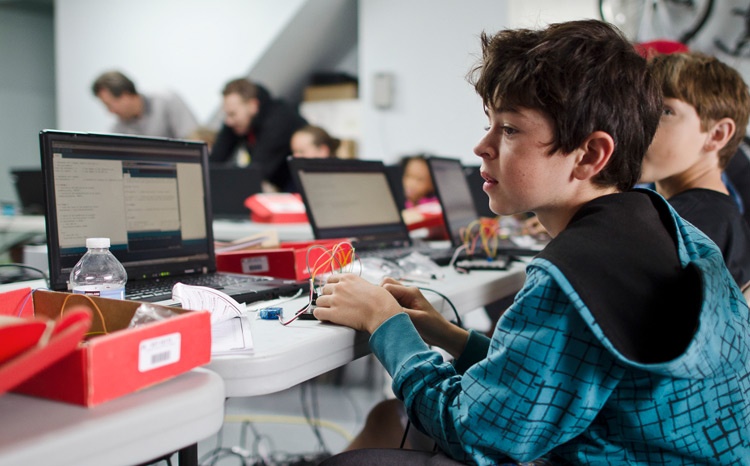My first couple months at SparkFun have been full of tinkering and learning. Before joining SparkFun, I knew what STEAM was and knew that I wanted to be a part of the awesome movement in maker education. But, I came from a world completely outside of coding and electronics — so there was quite a bit of learning that had to be done.
It wasn’t until my first conference, the Future of Education Technology Conference (FETC), that I realized many educators are just like me! They know they want to implement maker education in the classroom — and may even have funding for it — but don’t know how to get started.
That’s why we are here: to help you find the perfect solution for your individual classroom — from picking the right materials to providing online learning resources and professional development. You are never alone in those “How do I do this?!” moments.

Project-based learning is so important for our students today, as it prepares them for real-world problems. And experience with electronics and the core literacy of coding is equally important; STEM occupations are projected to grow by 17 percent from 2008 to 2018, compared with 9.8 percent growth for non-STEM occupations. Furthermore, 71 percent of all new jobs in STEM are in computing.
Our world is embracing tinkering versus textbooks. The jobs of the future will require at least some knowledge of computer science, and students can connect to this literacy through learning to program an Arduino board or making a circuit with LilyPad components and conductive thread. If you’re worried about not having support from your administration, consider this: principals at schools with students in seventh grade or higher are more likely to say computer science learning is a top priority.

The most important thing I have learned in my first few months at SparkFun is that it is OK to make mistakes. It is OK to get the code wrong on your first try. It is OK to not have all the answers and to ask your students for help. It is OK to feel overwhelmed at times. The important thing is to provide your students with a space to create, problem solve and learn.

And believe me, when you see that first LED light up, or use a banana as a keyboard for the first time, your whole life — and those of your students — will change for the better. Just by showing interest in STEM and maker education, your students will benefit; 55 percent of teens report they would be more interested in STEM simply by having teachers who enjoy the subjects they teach. So don’t wait until you feel you’ve mastered the subject; jump in and give maker education and computer science a try if you haven't already. In the process, you just might even become the coolest teacher ever! And if you ever need help along the way, we’re here for you.
Are you experienced? What has your journey into electronics, coding and maker education been like? Please share your stories in the comments below.


Maker Education